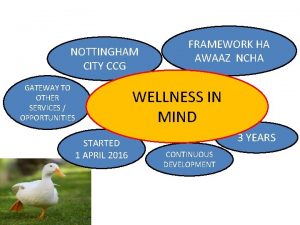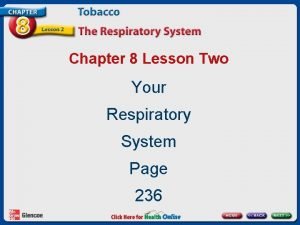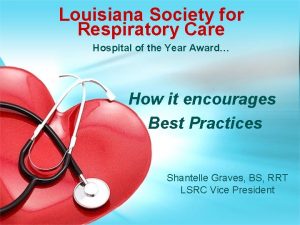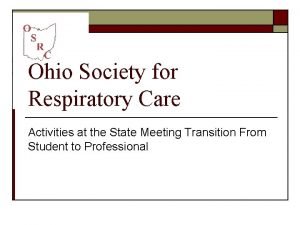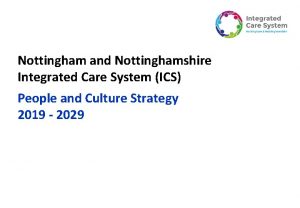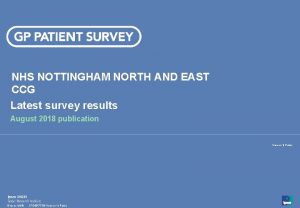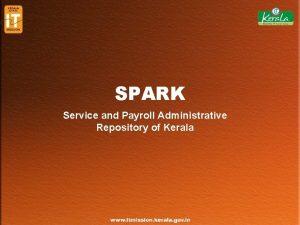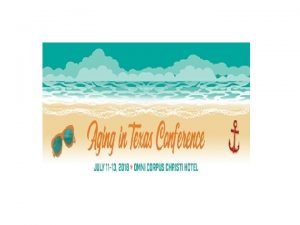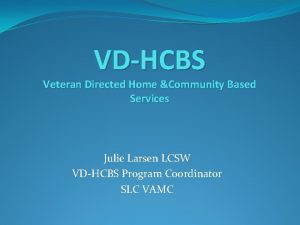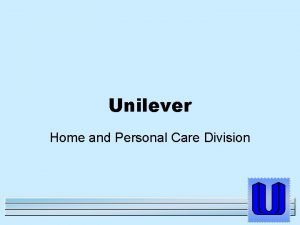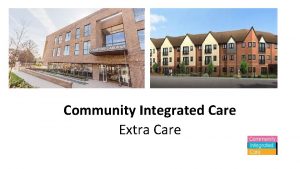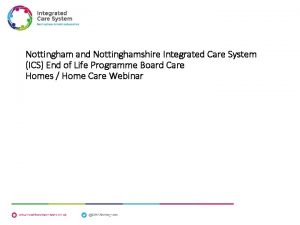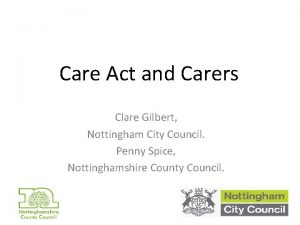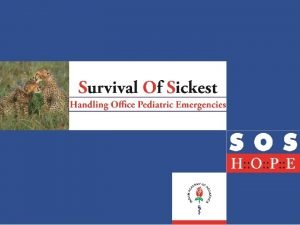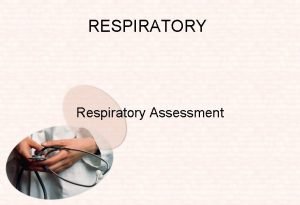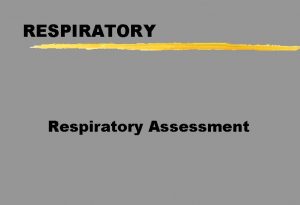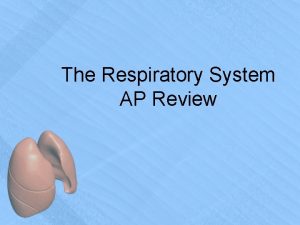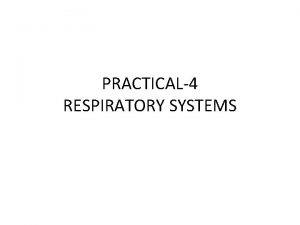Nottingham City Care Integrated Respiratory Service and Home



























- Slides: 27

Nottingham City Care Integrated Respiratory Service and Home Oxygen Service Zoe Styles Senior Physiotherapist

INTEGRATED RESPIRATORY SERVICE Slide 2

Team structure • Team of staff including Nurses, Physiotherapists, Community Support workers and Administrators. • Assess and manage respiratory patients (with confirmed respiratory diagnosis) who have a GP in the Nottingham City area. Slide 3

Contact details • Patients should all have a pink card and can contact us between 0800 and 1900 • Contact number 0115 8833622 Slide 4

Elements of Service • Acute nursing visits • Post hospital discharge visits • Case Management • Nursing clinics • Pulmonary Rehabilitation • Acute Physiotherapy • Domiciliary Physiotherapy Slide 5

Acute nursing visits • Patients contact the service using their pink card • Patients speak to a triage nurse to assess and establish if a visit is needed • Patients seen in their own home within 4 hours • Nurses complete a holistic assessment including respiratory assessment and guide on treatment as appropriate Slide 6

Acute visits continued • Short term nebuliser loan • Working in partnership with other agencies (e. g. GP practice team, social services) • Access to respiratory assessment unit. • Follow up as indicated by clinical need. Slide 7

Post Hospital Discharge Visits • Referrals from NUH for all respiratory patients on discharge • Telephone call to arrange an visit and discuss wellbeing • Holistic assessment • Referral to other aspects of the service as required (e. g. Pulmonary Rehabilitation) Slide 8

Case management • Visits in patients own home, regular visits as required • Aim to prevent hospital admissions • Education and advice • Medicines review • Referral in to other aspects of the service as appropriate Slide 9

Nursing clinics • Patients seen in clinics across the city (Bulwell riverside, Grange Farm, St Anns Valley Centre, Clifton Cornerstone) • Clinics to assess suitability for Pulmonary Rehabilitation • Respiratory review of patients able to attend clinic • Spirometry (for patients with complex needs or struggled with previous attempts) Slide 10

Pulmonary Rehabilitation • Classes run at Beechdale Community Centre, Bulwell Riverside, Clifton Cornerstone and St Anns Valley Centre • Assessments run at each venue weekly • Rolling Programme • Post exacerbation Slide 11

Pulmonary Rehabilitation continued • Sessions consist of exercise and education sessions • Each session is lead by a physiotherapist who will prescribe exercise based on a detailed assessment. • Education sessions include, benefits of exercise, What is happening in my lungs? , breathing control, chest clearance, medicines, inhaler technique, anxiety management, nutrition, energy conservation, dangers of smoking, community services, British lung foundation, managing exacerbations. Slide 12

Acute physiotherapy • Patients in exacerbation referred when struggling to clear their chests • Holistic assessment including respiratory assessment • Chest clearance and breathlessness management. • Follow up arranged as appropriate Slide 13

Domiciliary Physiotherapy • Home exercise programmes • Chest clearance • Breathlessness management Slide 14

HOME OXYGEN SERVICE ASSESSMENT AND REVIEW Slide 15

What we do: • Assess patients for LTOT & Ambulatory • Review patients with oxygen • Blood gases • Oxygen removal • All oxygen assessments completed in the patients own home Slide 16

Referral Criteria • Oxygen saturations consistently below 92% • Significant desaturation on exertion • 8 weeks clear of antibiotics / exacerbation • Not smoking • Already has oxygen Slide 17

Oxygen Facts • Oxygen is not used to treat breathlessness or anxiety • Blood gases need to be performed prior to prescription of oxygen • Oxygen should not be prescribed if patient is smoking • It is a medication • Can be harmful/fatal if used incorrectly or unnecessarily Slide 18

Oxygen Facts continued • Patients must be on optimal medication • Referral to the service is for oxygen assessment and oxygen may not be indicated. This will be discussed during the assessment process • Oxygen can be delivered via nasal cannula or mask • Oxygen safety is discussed with all patients (e. g. it must not be used near naked flame including gas cooker, trailing oxygen tubing) Slide 19

Patients not on oxygen • Seen to assess need at very first visit • Blood gases in clinic for baseline and assessment of clinical indication • If blood gases indicate oxygen: titrate for LTOT • If blood gases do not indicate oxygen: assess for ambulatory • Oxygen saturations must be consistently below 92% to merit assessment Slide 20

LTOT Patients • Patients reviewed 12 monthly at home • Blood gases and home review completed • Oxygen needs change – patients on oxygen may not need it forever and it may be removed • Therapy is for minimum of 16 hours through a concentrator Slide 21

Blood Gases • Small sample of blood from patient’s ear lobe • Analysed there and then • To assess need for oxygen 2 baseline readings must be obtained • Patients must be stable and 8 weeks clear of antibiotics and steroids • Maintenance antibiotics or steroids are ok Slide 22

Ambulatory assessments • Rehab setting only • Patients must have blood gas prior to assessment • For moderate to high level activity patients • Assessed by walking tests • Patients can have ambulatory without LTOT but this must be indicated by the tests Slide 23

Palliative patients • Still need a blood gas before prescribing • Must have hypoxic need not just breathless • Encourage fan therapy/breathing control/inhalers for breathlessness Slide 24

Short Burst • No clinical benefit therefore should not be prescribed • No longer fits with national guidelines Slide 25

Removal • When there is no clinical indication e. g. blood gases • If a patient is still smoking • Education on alternatives for breathlessness e. g. fan therapy • Follow up of oxygen saturations or blood gases 4 months later • Education on risks of using oxygen without clinical need Slide 26

Nottingham City. Care Partnership CIC 1 Standard Court Park Row Nottingham NG 1 6 GN e: citycare@nottinghamcitycare. nhs. uk t : 0115 883 9600 www. nottinghamcitycare. nhs. uk
 Nottingham city hospital respiratory assessment unit
Nottingham city hospital respiratory assessment unit Arti home care
Arti home care Woodview children's home nottingham
Woodview children's home nottingham Nottingham city council works perks
Nottingham city council works perks Dsl nottingham
Dsl nottingham Awaaz nottingham
Awaaz nottingham Citizen portal nottingham
Citizen portal nottingham Perbedaan home care dan home visit
Perbedaan home care dan home visit Respiratory zone
Respiratory zone Levels of care primary secondary tertiary quaternary
Levels of care primary secondary tertiary quaternary Ics north east
Ics north east Taking care of your respiratory system
Taking care of your respiratory system Respiratory care louisiana
Respiratory care louisiana Ohio society for respiratory care
Ohio society for respiratory care Nottingham and nottinghamshire ics
Nottingham and nottinghamshire ics Nottingham north and east ccg
Nottingham north and east ccg Service and payroll administrative repository
Service and payroll administrative repository New mobile home sales oak springs mobile home community
New mobile home sales oak springs mobile home community Plural of flower
Plural of flower Come home come home jesus is calling
Come home come home jesus is calling New mobile home sales oak springs mobile home community
New mobile home sales oak springs mobile home community What did you say
What did you say Arman home sweet home
Arman home sweet home She said that, home economics stands for the ideal home.
She said that, home economics stands for the ideal home. Home sweet home: survive
Home sweet home: survive Veterans directed home and community based care
Veterans directed home and community based care Veterans directed home and community based care
Veterans directed home and community based care Unilever swot
Unilever swot





